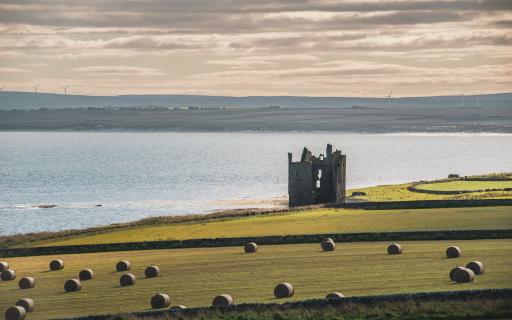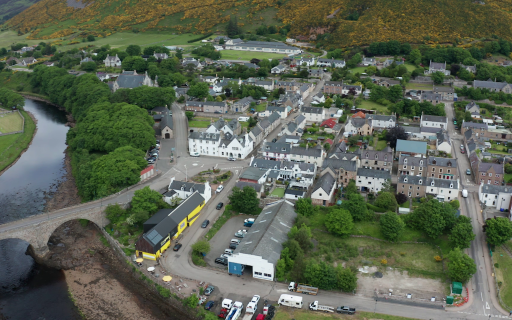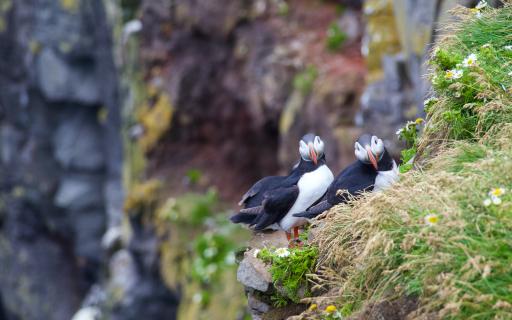
Warrior
The Silver Darlings came together from across East Caithness to stitch stories of the extraordinary natural and cultural heritage of Caithness.
This is their story.
The history of Caithness is bold, brilliant, and incredibly fascinating. The region remains a living landscape, where countless stories are inspired by the gentle roll of the hills and seas, the bustle of modern towns and coastal harbours as well as the remains of past communities etched in stone, are all waiting to be discovered. The 'saga' of Caithness begins over 419.2-358.9 million years ago in the Devonian period, delightfully known as the 'Age of Fishes', which marked the formation of area's iconic Old Red Sandstone. Upon which, thousands of years of Caithnessian natural and cultural heritage would play out.
The long history of human activity in Caithness begins in the Neolithic where, at 5,000 years old, the chambered burial cairns at Camster are two of the oldest Neolithic stone structures in Scotland. The region is also home to around 200 Iron Age brochs - the highest concentration of these homesteads in the whole of Scotland. Already in prehistory, the sheer significance of the region we now know as Caithness cannot be disputed.
The Silver Darlings brought their Viking warrior to life with vibrant colour and texture. He stands against the backdrop of prehistory, a stippled standing stone, with many eras of history surrounding him.
 The Silver Darlings warrior surrounded by history.
The Silver Darlings warrior surrounded by history.Image provided by Kirstie Campbell
When the Vikings arrived, the region was inhabited by the Picts. The landing of bands of Norsemen at Dunnet and the North East in the 10th century had a significant impact on the cultural identity of Caithness. From imposing coastal castles, the Norn language, surnames to the actual name 'Caithness' from 'Katanes' - likely a combination of 'Cait' or 'Catt', a Pictish kingdom, and the Old Norse 'nes' meaning headland. Scandinavian sovereignty in Caithness continued until 1266, when the Treaty of Perth marked the first time the region was acknowledged as an entirely Scottish territory.
Gaelic cultural heritage is similarly strong in Caithness (Gallaibh - 'land of the strangers'), with the language being spoken by up to a fifth of the population in some civil parishes into the 20th Century. Most notably in the western parishes of Latheron, Reay and Halkirk.
It goes without saying that thousands of years of saga-like histories can be difficult to navigate at times but create a deeply complex, entirely unique, Caithnessian identity. The fiery ginger-bearded Viking stitched boldly standing guard against the standing stones of old is a testament to this. The passage of time in this region is shared by hundreds of generations of communities on an ancient landscape, etched with their stories forevermore.
Discover more stories from our panel
 Helmsdale stitcher gathering with Councillor Richard Gale.
Helmsdale stitcher gathering with Councillor Richard Gale.Image provided by Angus Mackay
 Some of the Silver Darling Stitchers at the Black Stairs, Wick
Some of the Silver Darling Stitchers at the Black Stairs, WickImage provided by Lorraine Tait
WITH THANKS TO THE SILVER DARLINGS STITCHERS
This panel was stitched by Lorraine, Benedicta, Ann, Eleanor, Jill and Liene who gave their time, skill and energy to completing a fantastic artwork for their area.
If you would like to see the panel up close and admire the detail of their work, you can currently view the panel at the Caithness Broch Centre. To find out more about the Inverness Castle Experience click here
EXPLORE MORE STITCHERS STORIES BELOW
Swipe left for more










